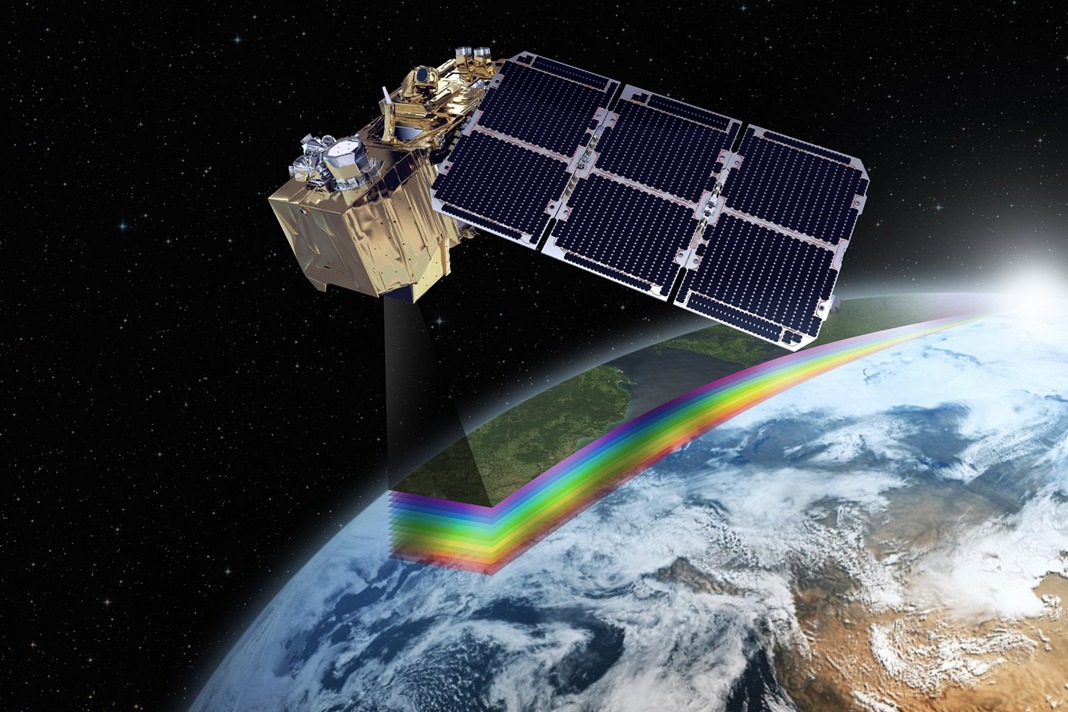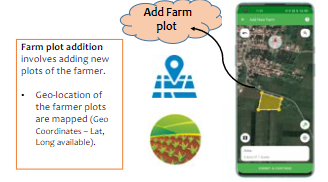Contact: +91 99725 24322 |
Menu
Menu
Quick summary: Explore the world of geospatial mapping with TraceX solutions. Unlock the potential of precise and data-driven farm management through advanced geospatial technology. Maximize efficiency, optimize resource allocation, and make informed decisions for your agricultural operations. Read our blog to learn more

According to FAO, smallholder farmers are responsible for producing about 80% of the food in developing countries. Smallholder farmers play a critical role in global food production, but face significant challenges related to climate change, access to resources and productivity. Geospatial mapping plays a critical role in the agriculture industry as it helps farmers and agribusinesses to understand and analyze their land and crop health.
Geospatial data mapping technology helps farmers to take informed decisions about crop management, soil health and water usage. This information is also essential in promoting sustainable farming practices and promoting the environment. TraceX’s farm mapping feature helps to improve transparency on the ground. There is a need for the farmers to understand what is happening in their farms to get the right support and inputs.
Geospatial mapping is the process of creating visual representations of data related to geographic locations. This data can include information on topography, land use, v vegetation and soil composition. Geospatial mapping technologies use satellite imagery, GPS and other technologies to gather and analyse this data, which can then be used to make informed decisions.
Geo-tagging and Polygon mapping are types of geospatial mapping. Geo-tagging involves attaching geographical data, such as latitude and longitude coordinates to digital content such as photos, videos and text messages. This allows the content to be organized and displayed based on its geographic location.
Polygon mapping is also known as vector mapping, that involves creating digital maps that use vector data to represent geographic features such as land boundaries, roads and buildings. This data stored as series of coordinates defines boundaries of the features, allowing the map to be displayed and manipulated at different scales and resolutions.
In GIS (Geographical Information System), vector data represents the information in three formats- points, lines and polygons. Polygons are used in GIS to measure the area and perimeter of a particular location. Polygons on a a map are commonly represented with different schemes and patterns for easier identification of data.
Polygon mapping is commonly used in GIS for a variety of applications, including land use, environmental management and natural resource conservation.
Geotagging ie. Marking the latitude and longitude of farms is no longer enough. The use of GPS polygon mapping that traces the entire perimeter of a farm for increased transparency and traceability would provide that additional layer of accuracy and insight.
Do you know the new EU rules for deforestation-free products state that operators will be required to collect the geographic coordinates of the land, where the commodities they place in the market were produced?
With the increasingly common use of geospatial information system in agriculture, polygon mapping is rapidly becoming important. Polygon mapping provides a number of advantages:
70% of world’s cocoa comes from West Africa. Most of them are smallholder farmers working on plots that are 4 hectares and less and are unproductive, generating little income. Given this scenario, it is challenging to track these farms unless there is a use of precise and accurate polygon mapping. It traces the entire parameter of a farm for increased transparency and traceability that provides an additional layer of insight and vigilance. It gives an ability to verify that cocoa that is being purchased has been grown within the boundaries of the farm and not in forests or other natural ecosystems nearby. This level of accuracy ensures that cocoa is being grown in deforestation-free area, thereby preventing cocoa laundering and assuring consumers on a deforestation-free purchase of their products.

Farm mapping is a precision agriculture technique that allows farmers to create detailed maps of their land. These maps usually contain land boundaries, location of buildings, fences, water pipes located on a farm. Farmers can also record the crops planted in different sections of their fields and details of operations that were carried out in those fields. Farmers also use drones, weather monitoring stations, sensors and soil monitoring technology to record more detailed information about their land and crops.

Trace Gro, the pre-harvest and farm management module of TraceX has a Farm plot management feature that plots a land in geospatial coordinates and also enables polygon mapping of farm boundaries. Crop mapping feature helps to record the different types of crops grown and the package of practices configured for each.
Geo-tagging of farms is an important requisite for farm management. It is an important tool for farmers and field officers to collect and analyze data about their operations. TraceX’s geo-mapping feature has enabled many enterprises and contract farmers to improve efficiency, increase yields and promote greater transparency and traceability in the agriculture value chains. It allows farmers to keep accurate records of their farm and crop activities. This is useful for tracking yields and satisfying regulatory compliance. It also allows farmers to collect and analyse location -based data over time. This helps to identify rends and patterns in crop growth and other farm operations to take informed decisions.
Use Case
Polygon mapping feature is of great importance in carbon offset projects where project area is of great significance. Most land sector projects require collection and reporting of geographic information which are specific to a project and are determined by geographic boundaries. Carbon offset projects demand accuracy on spatial measurements and avoidance of boundary overlaps. There could be requirements on differences in claimed area and area mapped.
TraceX’s feature helps in validating land boundaries in carbon projects thereby satisfying requirements of carbon project developers and the verification bodies and finally in generation of quality carbon credits.
There are a few challenges with geo-spatial mapping tools. The accuracy and reliability can depend on various factors, integrating data from many sources can be challenging and time consuming. Technical expertise in GIS software can be a deterrent and there may be data security and privacy issues. Nevertheless, geospatial data can be effectively used to informed decision making and improve outcomes in agriculture and environment management.
Boundaries are digital folders that automatically stores all relevant data in one place making it easier to derive insights. Farm management platforms with geo-mapping feature increase business efficiency and profitability. Historical yield data derived from different farms helps to determine factors affecting crop growth and helps in optimisation of inputs. Boundary mapping provides a competitive edge in a transparent and sustainable supply chain. The record of data at each stage with minimal manual intervention helps to demonstrate sustainable farming practices. Properly defined boundaries are pivotal to capture benefits of autonomous farming.
Know where you stand in the present and plot out the steps necessary to get to the future.
Geospatial mapping tools have the potential to transform the way we collect data and analyse data and our solutions can help companies navigate the challenges associated with using these tools in practice. User-friendly, accurate and reliable tools help in informed decision making, improve efficiency and drive positive outcomes.
